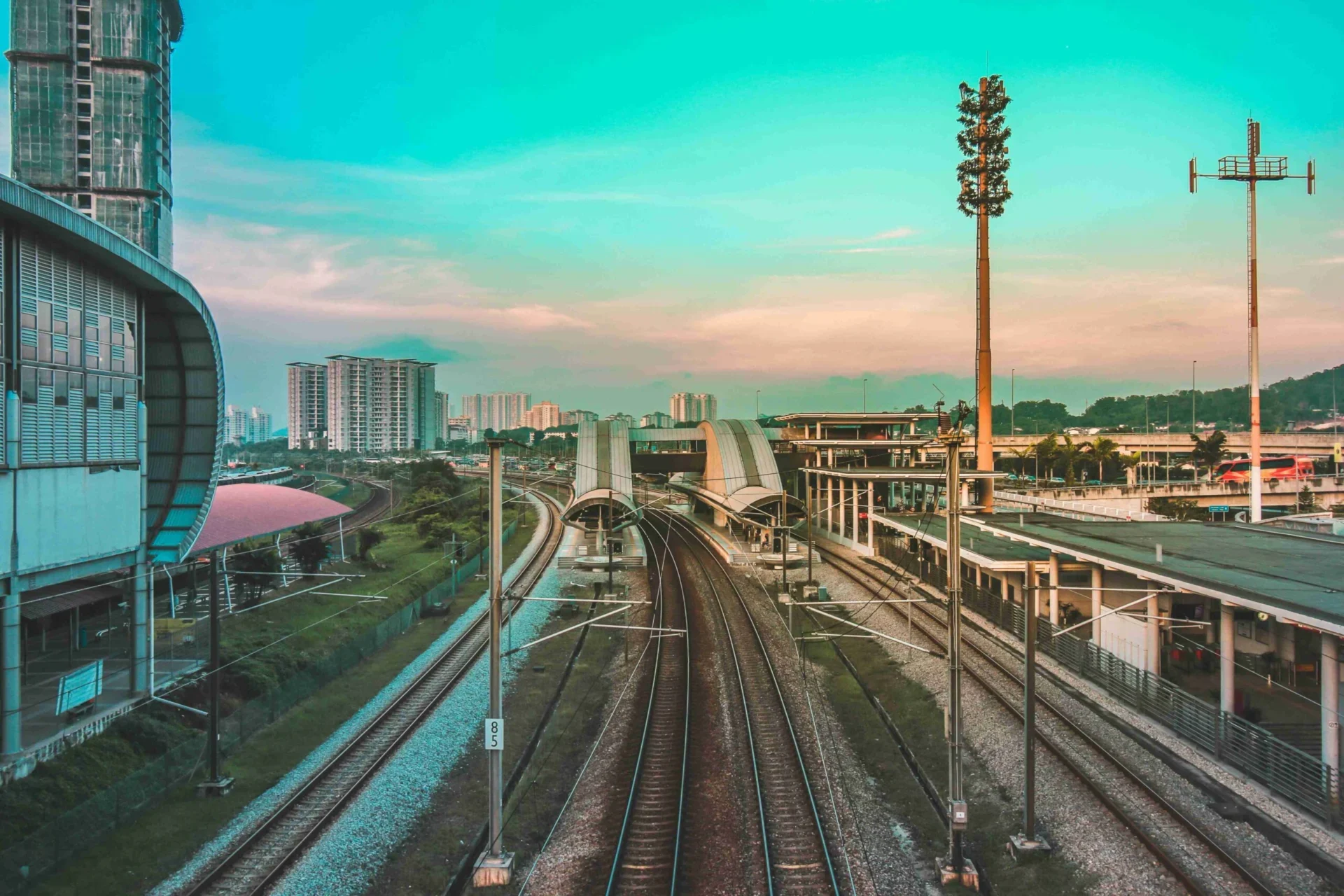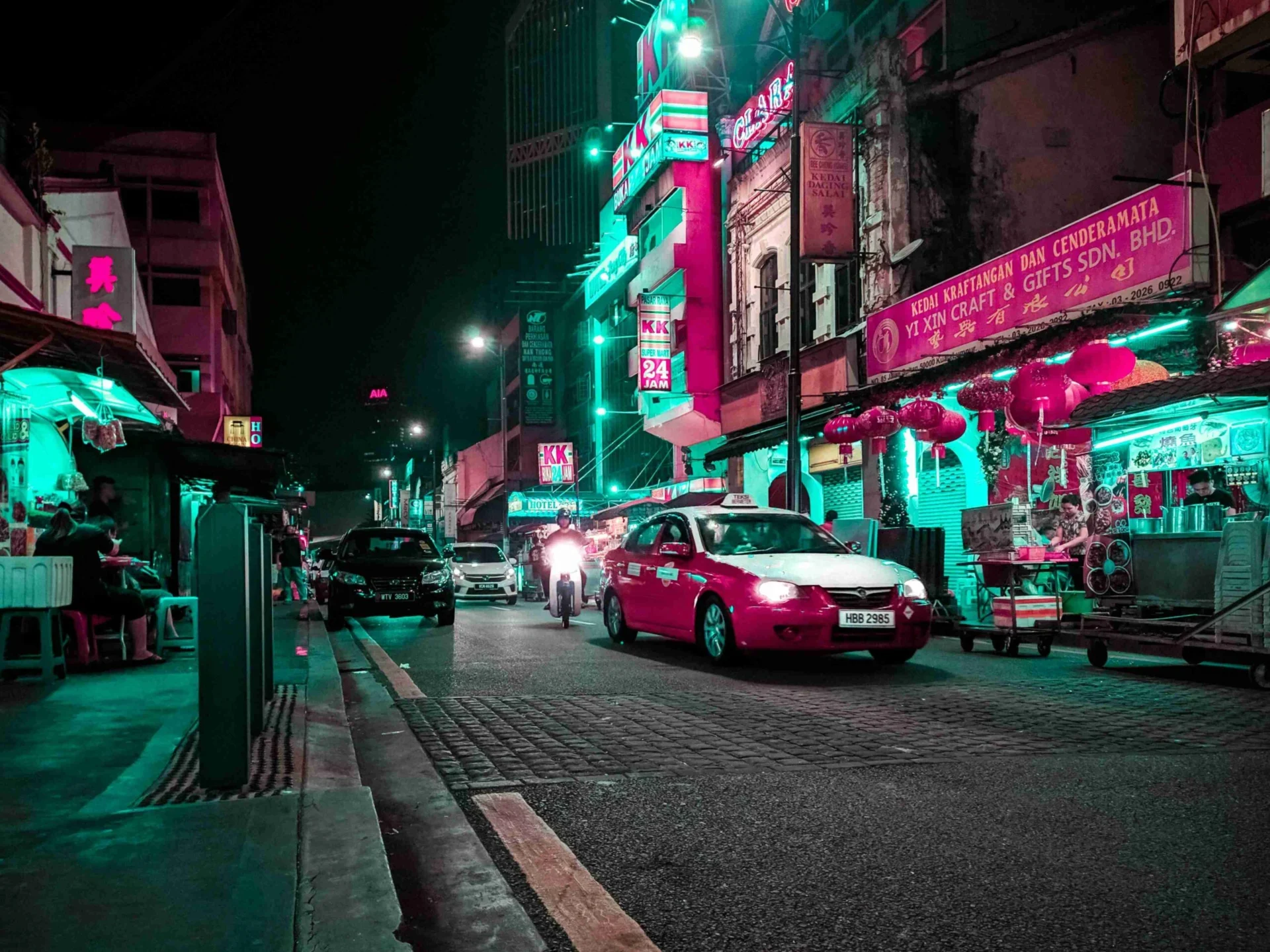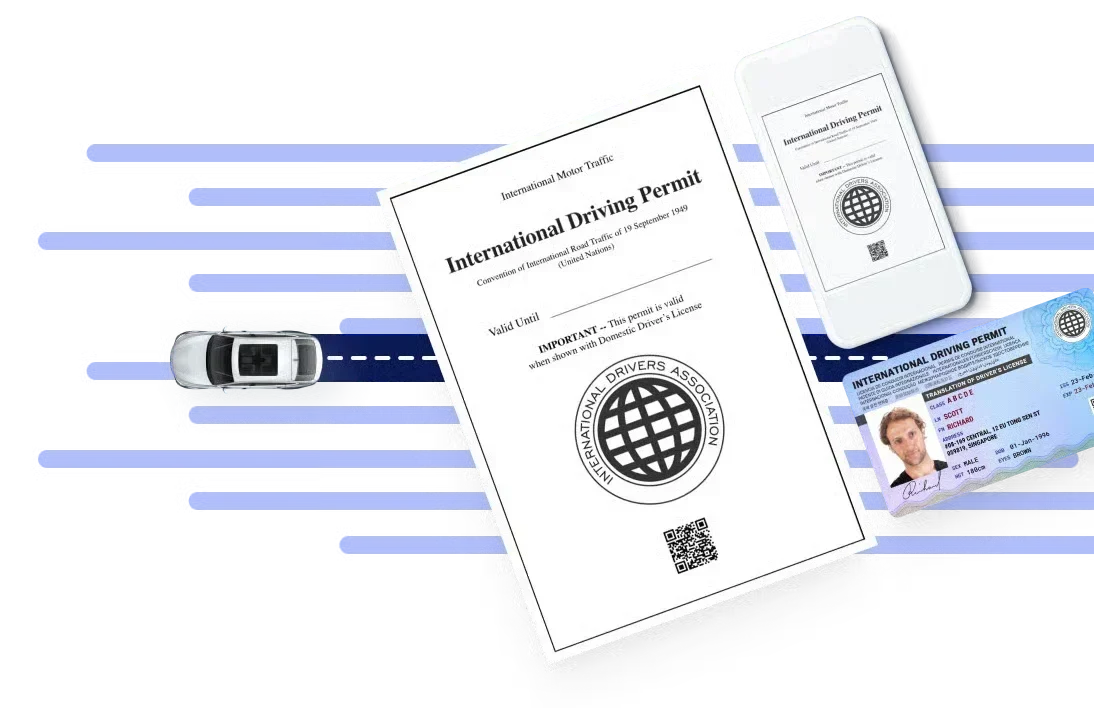Malaysia is bustling with tourists. In fact, in 2023, around 20 million people visit. And a large percentage of these tourists are using Malaysia’s public transit. Are you planning to go next? If your answer is yes, then it’s best to know how to navigate this vibrant country in a breeze.
Check if you need an IDP NowWhere was your license issued?
Destination
From the bustling streets of Kuala Lumpur to the pristine beaches of Langkawi. Discover the best ways to get around, whether traveling on a budget or indulging in luxury. Here’s a ridiculously extensive guide to public transit in Malaysia.
Traveling By Public Bus
Malaysia’s extensive bus network is a popular choice for locals and tourists alike. It offers an affordable and convenient way to travel. Numerous private bus companies compete for passengers, so services are frequent and reliable.
Intercity buses typically feature air conditioning and comfortable seating for a pleasant journey. Tickets can be easily purchased at kiosks or ticket counters located in major squares, tourist attractions, and shopping malls, especially in Kuala Lumpur.
Public Operators
Go KL City Bus
The Go KL City Bus is a convenient, free option for exploring Kuala Lumpur’s tourist hotspots, such as Bukit Bintang, Chinatown, and KLCC. These pink buses run every 15 minutes and feature air conditioning and free WiFi. They are operated by Rapid Bus and Konsortium Transnasional.
RapidKL
This comprehensive network has 177 routes across the city. Recently, it has been reorganized into four categories: express, city shuttles, trunk, and local shuttles. Bus stations have information counters for assistance. Fares are typically RM 3 ($0.69). You’ll need a Touch ‘n Go card, which costs RM10 ($2.30), including an RM5 ($1.15) card deposit.
Konsortium Transnasional Berhad (KTB)
Malaysia’s largest bus operator, offering a variety of services:
- Transnasional: Stage buses for regular routes.
- Pushliner: Express bus service for faster travel.
- Nice: Luxury bus service with premium amenities.
- Cityliner: Specialized services for specific routes.
KTB operates over 1500 buses on 250 routes, serving over 60 million passengers annually. They also offer services to and from Singapore.
Private Operators
Aeroline
Experience the epitome of bus travel with Aeroline. This premium service connects Peninsular Malaysia and Singapore, offering onboard mobile business lounges for a genuinely luxurious journey. Enjoy refreshments and attentive service from the onboard crew.
Super Nice
A trusted name in Malaysian bus transportation since the 1980s, Super Nice (also known as Supernice Grassland or Comfort Super Nice Express Sdn Bhd) provides reliable services to key destinations, including Ipoh, Kuala Lumpur, Klang, Seremban, Melaka, Muar, Batu Pahat, Genting Highland, and Sungai Petani.
Traveling By Train Service
Trains offer a more relaxed and comfortable way to explore Malaysia’s scenic landscapes .
KL Monorail
The KL Monorail is a crucial part of Kuala Lumpur’s transportation system, connecting KL Sentral to Titiwangsa. Operated by Rapid Rail, it’s part of the RapidKL network, providing connectivity throughout Greater Kuala Lumpur and Selangor.
With frequent services throughout the day, the monorail offers a convenient way to travel within the city. It intersects with other transit systems like the LRT and MRT, making it easy to reach various destinations.
Key Stations and Routes
- KL Sentral: The main transportation hub
- Tun Sambanthan, Maharajalela, Hang Tuah: Central business district and shopping areas
- Imbi, Bukit Bintang: Popular tourist destinations and entertainment hubs
- Bukit Nanas, Medan Tuanku, Chow Kit: Residential and commercial areas
- Titiwangsa: A northern suburb
The monorail’s route ensures easy access to key areas, making it a valuable asset for both residents and visitors to Kuala Lumpur.
Light Rail Transit (LRT)
The Light Rail Transit (LRT) is a reliable and affordable way to get around Kuala Lumpur. Operated by RapidKL, it offers frequent and punctual services that connect various parts of the city.
LRT Lines
- Kelana Jaya Line: Connects the city center to popular areas
- Ampang Line: Serves eastern regions
- Sri Petaling Line: Serves southern regions
With stations accessible from 6 am daily, the LRT is a convenient choice for exploring Kuala Lumpur.
KTM Komuter
KTM Komuter is a convenient and affordable way to travel within Kuala Lumpur and its surrounding areas. Operated by KTM, it offers extensive routes and various amenities for passengers.
Key Features
- Two Main Lines: Port Klang Line and Seremban Line
- Ticket Options: Purchase tickets based on distance or use Touch ‘n Go
- Station Amenities: Elevators, escalators, and restrooms
Major Routes
- Batu Caves – Pulau Sebang
- Tanjung Malim – Pelabuhan Klang
- Padang Rengas – Bukit Mertajam
- Butterworth – Padang Besar
Traveling long distances on KTM Komuter requires planning. To ensure a comfortable journey, reserve your tickets in advance to secure seats and save money, especially during peak seasons. Consider your budget and preferences when choosing a train class, ranging from economy to first-class.
Remember that train delays can occur, so plan your itinerary with extra time and stay updated on the latest schedules. Lastly, pack essential items like snacks, water, and entertainment to make your trip more enjoyable.


Mass Rapid Transit (MRT)
The MRT system is a modern mode of transport and a major addition to Kuala Lumpur’s transportation network. It’s larger than the LRT and offers a convenient way to travel around the city.
MRT Lines
- Sungai Buloh-Kajang (SBK) Line: Connects northwest and southeast suburbs.
- Sungai Buloh-Serdang-Putrajaya (SSP) Line: Links Sungai Buloh to Putrajaya.
- Circle Line: Under construction, aiming to improve central connectivity.
Purchasing MRT tickets is easy. You can buy them from vending machines located at the stations or seek assistance from the station staff. MRT tickets are tokens that you insert into the turnstiles at the entrance and exit gates.
MRT Tips
- Consult the MRT Malaysia map for routes and stations.
- Fares are based on distance traveled.
- Find detailed information on the Rapid KL website.
The MRT is a modern and efficient way to explore Kuala Lumpur. With ongoing expansion plans, it will become even more accessible in the future.
Check if you need an IDP NowWhere was your license issued?
Destination
KLIA Ekspres
The KLIA Ekspres is a high-speed train that connects Kuala Lumpur International Airport (KLIA) to the city center. It offers comfortable travel with air conditioning and WiFi and arrives every 15-20 minutes.
Routes
- KLIA T2 to KL Sentral: Stops at KLIA T1, Salak Tinggi, Putrajaya & Cyberjaya, and Bandar Tasik Selatan.
- KL Sentral to KLIA T2: Follows the same route in reverse.
Discover Kuala Lumpur Package
This package includes a round-trip KLIA Ekspres ticket and a KL Hop-On Hop-Off bus tour. It’s ideal for visitors with a long layover.
- Price: RM65 – $14.96 (children), RM140 – $32.24 (adults)
- Pick-up Point: Stop 19 – KL Sentral
KL Hop-On Hop-Off Tour
The KL Hop-On Hop-Off Tour operates daily, departing from Sg Wang Plaza at 9:00 AM. Buses run every 20-30 minutes, with the last pick-up at 5:00 PM. The tour offers two routes: the City Route and the Garden Route (Red & Green Line). Each route takes approximately 1.5 hours to complete. Please note that the tour voucher is valid for 24 hours.
Traveling By Taxis
Taxis are not a common mode of transportation in Malaysia, but they offer convenience for those seeking a more direct and private journey. Kuala Lumpur has both local and long-distance taxis. Local taxis, identified by their red and white or yellow and blue colors, can be hailed anywhere in the city. Long-distance taxis, based at Puduraya bus station, operate when fully booked and are typically more expensive.
Unfortunately, taxi drivers in Malaysia , particularly those targeting tourists, often refuse to use meters and overcharge passengers. Remember, a reasonable fare per kilometer is around RM 3 ($0.69). Tourists are advised to exercise caution and pay in cash.
Long-distance taxis
Long-distance taxis are a popular option for traveling between Malaysian towns. They’re often found near express bus stations and can be a faster alternative to buses. However, they operate on a shared basis, so you’ll need to wait for other passengers to fill the vehicle. This shouldn’t take long in major towns, especially in the morning. Expect to pay two to three times the bus fare, especially during fuel price increases.
For travelers in groups, chartering a long-distance taxi can be more convenient. This allows you to depart immediately and reach destinations not served by buses or shared taxis. Prices are regulated and typically displayed on boards or tariff cards.
Tip: If you prefer to share a taxi, let the driver know by saying, “nak kongsi dengan orang lain.”
Traveling By Ferry Transport System
Ferries and boats provide transportation to various islands and coastal areas in Malaysia. Popular destinations include Langkawi , Penang, the Perhentians, Tioman, and Pangkor. Vessels range from modern speedboats to traditional penambang. Tickets are typically purchased in advance at the jetty but sometimes can be bought on board.
In Sarawak, scheduled boat services are primarily available along the Rejang River between Kuching, Sibu, and Belaga. Smaller tributaries often require chartering a longboat.
Sabah doesn’t have express-boat river services. However, regular ferries connect Pulau Labuan with Kota Kinabalu, Sipitang, and Menumbok on the west coast.
Traveling by Air
Flying is a convenient way to get around Malaysia, especially with budget carriers like AirAsia and Firefly offering competitive prices. However, keep in mind a few things:
- Connections: Many regional flights require a transfer to Kuala Lumpur (KL), increasing travel time compared to land options.
- Fares: Prices listed here are one-way and may not reflect current deals or peak season surcharges. Check airline websites for the latest offers.
- Baggage: Be mindful of baggage limitations – AirAsia, for instance, charges extra for checked luggage exceeding 15kg.
Popular Airlines
Malaysia Airlines (MAS)
This full-service carrier offers comfortable flights to most state capitals, Langkawi and Labuan. Its subsidiary, MASwings, caters to East Malaysia with smaller planes, providing vital connections for rural communities.
Firefly
The budget arm of MAS, Firefly, connects smaller destinations within the Peninsula and recently expanded routes to Kota Kinabalu, Sandakan (Sabah), and Sarawak (Sibu, Kuching). Fares are generally lower than MAS for similar routes.
AirAsia
This popular low-cost carrier boasts a vast network of domestic flights with fares starting as low as RM40 ($9.21) for short hops within the Peninsula. Be prepared for potential delays and baggage fees for exceeding the 15kg limit.
An alternative option is the Berjaya Air. This airline services the resort islands of Redang and Tioman from Kuala Lumpur, catering to tourists visiting Berjaya Corporation resorts.
Driving in Malaysia
While it’s budget-friendly to use public transit, driving in Malaysia is a viable option, especially in Peninsular Malaysia, where roads are generally well-maintained. However, be aware of local driving habits, which may differ from what you’re accustomed to.
- Road Conditions: Roads in Sarawak are generally good, but in Sabah, some areas have unpaved roads that are prone to flooding.
- Driving Rules: Driving is on the left, and seat belts are mandatory for front-seat passengers.
- Rental Requirements: You must be at least 23 years old and have a valid driving license to rent a vehicle. Aside from your original license, you may need a foreign driving permit to drive around without getting into any lawful hiccups.
Final Thoughts
Malaysia’s diverse transportation options make exploring this vibrant country a breeze. Whether traveling by train, bus, or plane, you’ll find convenient and affordable ways to reach your destination. So, pack your bags and embark on your Malaysian adventure!
Frequently Asked Questions
Is public transportation safe in Malaysia?Yes, public transportation in Malaysia is generally considered safe. However, it’s always a good idea to be aware of your surroundings and take precautions.
Are there any specific areas of Malaysia where public transportation is more challenging to navigate?Smaller towns and rural areas may have limited public transportation options.
What is the best way to get around smaller towns and villages in Malaysia?Renting a motorcycle or car or hiring a private driver may be necessary in smaller areas.
Are there any cultural customs or etiquette to be aware of when using public transportation in Malaysia?It’s generally considered polite to offer your seat to elderly people, pregnant women, or people with disabilities.
What is the best time of day to avoid crowds on public transportation?The best time to avoid crowds on public transportation in Malaysia typically depends on the specific mode of transportation and the city or region you’re in. However, here are some general guidelines:
- Early mornings: Early mornings (before 7 AM) are generally less crowded, especially during weekdays. This is when people are commuting to work or school.
- Late evenings: Public transportation can become less crowded as people head home after peak rush hour (usually around 7 PM).
- Weekends: Weekends are generally less busy than weekdays, especially for commuters. However, popular tourist destinations might still have crowds, especially during peak seasons.
- Avoid peak hours: Rush hour, typically from 7-9 AM and 5-7 PM, is the busiest time for public transportation. Try to plan your trips outside of these hours if possible.






